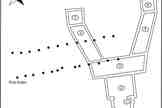It looks like you're using an Ad Blocker.
Please white-list or disable AboveTopSecret.com in your ad-blocking tool.
Thank you.
Some features of ATS will be disabled while you continue to use an ad-blocker.
11
share:
Source

Just thought I would share this discovery with all of you and get some input on it.
I love this story because as I have said before there is no better mystery than one that involves history, and anything that has no parallels to it is always going to provide good reading material.
I looked around on here and didn't find this mentioned, so I thought I would bring it up. Enjoy.
Any thoughts?
Pred...

A recently discovered mysterious "winged" structure in England, which in the Roman period may have been used as a temple, presents a puzzle for archaeologists, who say the building has no known parallels.
Built around 1,800 years ago, the structure was discovered in Norfolk, in eastern England, just to the south of the ancient town of Venta Icenorum. The structure has two wings radiating out from a rectangular room that in turn leads to a central room.
"Generally speaking, [during] the Roman Empire people built within a fixed repertoire of architectural forms," said William Bowden, a professor at the University of Nottingham, who reported the find in the most recent edition of the Journal of Roman Archaeology. The investigation was carried out in conjunction with the Norfolk Archaeological and Historical Research Group.
The winged shape of the building appears to be unique in the Roman Empire, with no other example known. "It's very unusual to find a building like this where you have no known parallels for it," Bowden told LiveScience. "What they were trying to achieve by using this design is really very difficult to say."
Just thought I would share this discovery with all of you and get some input on it.
I love this story because as I have said before there is no better mystery than one that involves history, and anything that has no parallels to it is always going to provide good reading material.
I looked around on here and didn't find this mentioned, so I thought I would bring it up. Enjoy.
Any thoughts?
Pred...
Good find! S+F
It is a curious site.

It is a curious site.

edit on 22-1-2012 by isyeye because: (no reason given)
reply to post by chrismicha77
I was going to say that too, but I figured that the little white branches of the middle part were what they're talking about.
I was actually going to tell people to point out what they thought it was in my OP.
Pred...
I was going to say that too, but I figured that the little white branches of the middle part were what they're talking about.
I was actually going to tell people to point out what they thought it was in my OP.
Pred...
new topics
-
Reflections of Elections past
US Political Madness: 8 minutes ago -
President Carter has passed
Mainstream News: 2 hours ago -
Get Reday - Here comes the Bird Flu Pandemic - Millions are Notified
Diseases and Pandemics: 2 hours ago -
2 Guys die hunting Bigfoot
Cryptozoology: 3 hours ago -
Joe Rogan and The Black Keys Diorama
General Entertainment: 5 hours ago
top topics
-
President Carter has passed
Mainstream News: 2 hours ago, 10 flags -
Get Reday - Here comes the Bird Flu Pandemic - Millions are Notified
Diseases and Pandemics: 2 hours ago, 9 flags -
2 Guys die hunting Bigfoot
Cryptozoology: 3 hours ago, 4 flags -
Joe Rogan and The Black Keys Diorama
General Entertainment: 5 hours ago, 3 flags -
Reflections of Elections past
US Political Madness: 8 minutes ago, 0 flags
11
